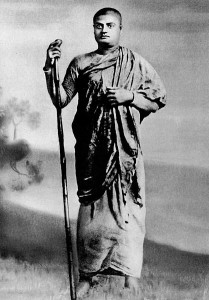[Editor’s Note: Part of an occasional series about yoga and its origins.]

In 1909, noted Theosophist (and alleged pedophile) Charles Webster Leadbeater discovered the teenager Krishnamurti on the banks of the Adyar River in a wealthy Madras suburb. Convinced that here was the future “world teacher”—a vehicle for the messiah, in Theosophist lore—Leadbeater’s colleague Annie Besant became Krishnamurti’s guardian. Theosophy is a form of esoteric thought that seeks to understand human-divine connections through a mystical synthesis between ideas of Eastern and Western spiritualism. Besant became head of the Theosophical Society in Madras, British India and created the Order of the Star of the East (1911-1927) to prepare the world for Krishnamurti’s future teachings. During the same period, she co-founded the Indian Home Rule League (1916-1920), which advocated for Indian self-rule and status as a British Dominion. Part of her platform included national education programs to uncover a notion of pre-modern Indian, Hindu civilization beloved of the Theosophists, and to prepare Indian peoples for some form of self-government within what was then an informal British Commonwealth arrangement.



